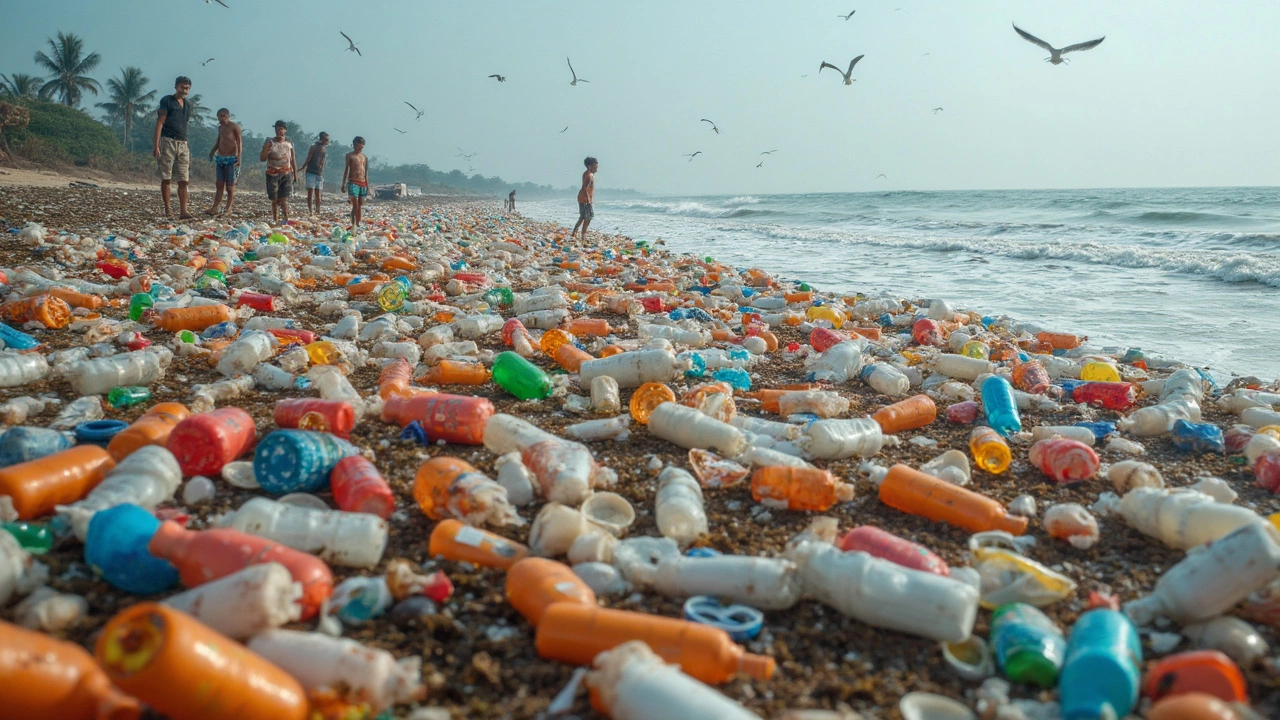Marine Debris: Impact, Sources, and Solutions
When talking about marine debris, any human-made solid material that ends up in the ocean, from large fishing gear to tiny plastic fragments. Also known as sea litter, it threatens wildlife, tourism, and coastal economies. Marine debris encompasses everything from abandoned nets to storm‑driven trash, creating a hidden crisis beneath the waves.
Key Related Topics
One of the biggest contributors is plastic pollution, the accumulation of plastic items like bottles, bags, and packaging in marine environments. Plastic waste doesn’t decompose quickly, so it builds up over decades. This pollution requires robust waste management, systems that collect, sort, and process waste to keep it out of rivers and oceans, to break the supply chain that feeds the ocean.
Another critical piece is microplastics, tiny plastic particles smaller than 5 mm that result from the breakdown of larger debris. These particles infiltrate food webs, affecting fish, seabirds, and even humans. Microplastics influence marine ecosystems by altering water quality and posing ingestion risks to marine life.
Ocean currents act like invisible highways, moving debris across continents. The Great Pacific Garbage Patch, a massive concentration of floating plastic in the North Pacific Gyre, shows how currents concentrate waste. Understanding these transport patterns helps designers target cleanup hotspots.
Coastal communities feel the sting first. Beach clean‑ups, fishing gear entanglement, and declining tourism revenue are everyday realities for residents. When local economies suffer, public pressure builds for better policies and community‑driven solutions.
Effective action combines technology and community effort. Devices like surface skimmers, submarine nets, and autonomous drones capture large items, while citizen science apps let volunteers log litter sightings. These tools rely on clear data, which ties back to waste management planning and policy enforcement.
Policy plays a decisive role. Bans on single‑use plastics, extended producer responsibility, and international agreements shape how much debris enters the sea. When governments set stricter standards, manufacturers adjust packaging, and the whole supply chain improves.In short, tackling marine debris means addressing plastic pollution, improving waste management, monitoring microplastics, and leveraging ocean currents knowledge. Below you’ll find a curated set of articles that dive deeper into each of these angles, offering data, case studies, and practical steps you can take or recommend. Let’s explore how the pieces fit together and what you can do next.
